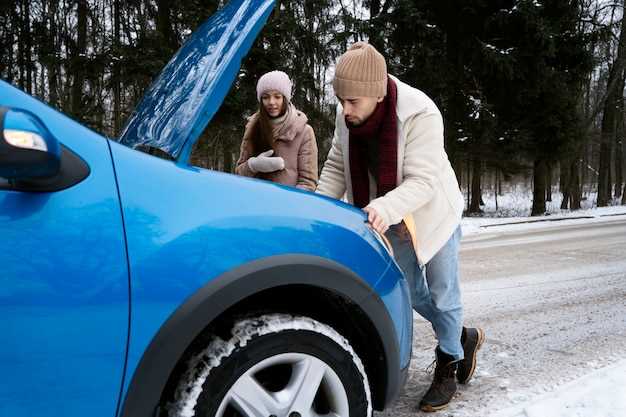
Driving classic cars can invoke a sense of nostalgia and freedom, but the pleasure of cruising in a vintage vehicle comes with significant responsibilities, especially when faced with unpredictable weather conditions. Weather variability presents unique challenges that can compromise the safety of both the driver and the classic car. Understanding how to adapt your driving techniques and prepare your vehicle for different weather scenarios is essential for a safe and enjoyable experience.
In rainy or wet conditions, classic cars, which might lack modern traction control systems, can easily lose grip. Therefore, adjusting speed and maintaining a greater following distance become crucial. Proper tire maintenance and ensuring that brakes are responsive is vital before taking a classic car out in the rain. Additionally, visibility can diminish in adverse weather, making it necessary to use headlights and windshield wipers effectively.
On the other hand, driving in extreme heat can lead to overheating engines and malfunctioning components in older vehicles. Regular checks on fluid levels, especially coolant and oil, are imperative. It’s important to avoid heavy traffic or extended idling under harsh sunlight as these conditions can exacerbate existing mechanical issues in classic cars.
Adapting your driving style to each weather condition while being aware of the unique challenges presented by classic vehicles will not only enhance your driving experience but also preserve the integrity and longevity of your cherished ride. This article will delve deeper into the specific strategies and preventive measures that classic car enthusiasts can adopt to enjoy safe driving no matter the weather.
Preparing Your Classic Car for Rainy Weather

Ensuring your classic car is ready for rainy conditions requires careful attention to various components. Start by inspecting the windshield wipers. Replace worn-out blades to improve visibility during downpours. Test their functionality to ensure they operate smoothly.
Next, check the tires for adequate tread depth and proper inflation. Good traction is crucial for maintaining control on wet roads. If the tires show signs of wear, consider replacing them with ones suitable for wet conditions.
Examine the car’s exterior for any rust or damage to the paint and sealant. Water can exacerbate existing issues, leading to further deterioration. Repair any rust spots and apply a protective wax coating to help repel moisture.
Inspect the headlights and taillights for functionality. Ensure all bulbs are working properly, as visibility can be significantly reduced in rain. Clean the lenses to enhance brightness, which is vital for safety.
Additionally, verify the integrity of your car’s weather stripping. This rubber material around doors and windows prevents water from entering the interior. Replacing worn or cracked weather stripping can keep your car dry and free from mold.
Finally, consider keeping a set of driving essentials in your car, such as an umbrella, a towel for drying hands, and a flashlight. These items can be invaluable during sudden downpours or unexpected circumstances.
Handling Snow and Ice: Techniques for Classic Car Drivers

Driving a classic car in snowy and icy conditions requires special attention and specific techniques to ensure safety and maintain vehicle integrity. Due to their design and performance characteristics, classic cars may not handle winter weather as effectively as modern vehicles, making it essential for drivers to adapt their driving style.
1. Preparation is Key
Before venturing out, ensure your classic car is winter-ready. This includes checking tire tread depth and pressure to ensure optimal grip. Consider installing winter tires, which provide better traction in cold conditions. Also, inspect the brakes, battery, and antifreeze levels to avoid mechanical failures during icy conditions.
2. Control Your Speed
Adjust your driving speed according to road conditions. Slower speeds provide more time to react to sudden changes, like unanticipated ice patches. Accelerate and decelerate gently to maintain traction; sudden movements can cause skidding or loss of control.
3. Maintain a Safe Following Distance
Increase the distance between your vehicle and the one ahead of you. In winter conditions, stopping distances can significantly increase due to slick roads. A longer following distance gives you ample time to react and stop safely.
4. Use Smooth Steering and Braking Techniques
When navigating snow and ice, make all steering and braking actions smooth and gradual. Abrupt maneuvers can lead to skidding. If you feel the tires slip, remain calm, steer gently in the direction you want the car to go, and avoid slamming on the brakes.
5. Know How to Recover from Skids
If your classic car begins to skid, remain calm and follow proper recovery techniques. In oversteer situations, gently steer into the direction of the skid. For understeer, ease off the accelerator and steer into the turn. Avoid sudden actions; patience is vital for regaining control.
6. Be Aware of Ice Hazards
Watch for black ice, especially in shaded areas or on bridges and overpasses. These spots can be deceivingly slick. If you notice a patch of ice, slow down well in advance and avoid sudden changes to your driving path.
7. Use Engine Engine Braking
Using the engine to brake rather than relying solely on the brakes can help maintain better control on slippery surfaces. Downshift smoothly to use engine resistance; this technique will reduce speed while minimizing the risk of wheel lock-up.
By employing these techniques, classic car drivers can navigate snowy and icy roads effectively, ensuring both safety and enjoyment while preserving the integrity of their treasured vehicles.
Protecting Your Classic Car from Extreme Sun Exposure
Extreme sun exposure poses significant risks to classic cars, potentially leading to damage in various forms. The paint, rubber seals, and interior fabrics can suffer from UV radiation, causing fading, cracking, and deterioration over time. To safeguard your vehicle, consider implementing a few effective strategies.
1. Regular Waxing: Apply a high-quality wax to your car’s exterior every few months. This layer provides a protective barrier against UV rays, helping to maintain the paint’s integrity and shine. Look for products specifically designed to protect against sun damage.
2. Use of Car Covers: Whenever possible, cover your classic car with a breathable, UV-resistant car cover when parked outdoors. Ensure the cover fits properly to prevent it from blowing away or trapping moisture underneath, which can lead to paint damage.
3. Parking in Shade: Whenever feasible, park your classic car in shaded areas or use garage storage. Trees, awnings, or specially designed car ports can help minimize direct sunlight exposure, reducing the risk of heat buildup and UV damage.
4. Window Tinting: Consider applying a UV-filtering film to the windows. Quality window tints can block a significant percentage of UV rays, protecting both the interior and the upholstery from fading and cracking.
5. Regular Inspections: Conduct routine inspections of your classic car to identify early signs of sun damage. Pay special attention to the paint, rubber seals, and interior materials. Addressing minor issues promptly can prevent more extensive damage in the future.
6. Interior Protection: Use sunshades or window visors to shield the dashboard and seats from direct sunlight. Additionally, conditioning and treating the leather or fabric with protective agents can enhance their durability against UV exposure.
By following these measures, you can effectively protect your classic car from the detrimental effects of extreme sun exposure, ensuring its beauty and longevity for years to come.
